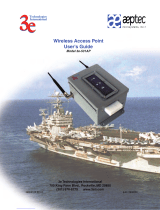
CHAPTER 1
Field Reference for Monitor Pages
This section provides descriptions of the fields found under the Monitor tab in Cisco Prime Infrastructure.
•Monitor > Switches > Physical Ports, on page 2
•Monitor > Switches > Sensors, on page 2
•Monitor > Switches > Spanning Tree, on page 3
•Monitor > Switches > Spanning > Tree > STP instance ID , on page 3
•Monitor > Switches > Stacks , on page 4
•Monitor > Switches > Interfaces > Ethernet Interfaces, on page 4
•Monitor > Switches > Interfaces > Ethernet Interface Name, on page 5
•Monitor > Switches > Interfaces > IP Interface, on page 6
•Monitor > Switches > Interfaces > VLAN Interface, on page 6
•Monitor > Switches > Interfaces > EtherChannel Interface, on page 6
•Monitor > Switches > Client, on page 7
•Monitor > Wireless Technologies > Access Point Radios, on page 7
•Monitor > Wireless Technologies > Access Point Radios > Edit View, on page 8
•Monitor > Wireless Technologies > Access Point Radios > Load, on page 10
•Monitor > Wireless Technologies > Access Point Radios > Dynamic Power Control, on page 10
•Monitor > Wireless Technologies > Access Point Radios > Voice TSM Table, on page 11
•Monitor > Wireless Technologies > Access Point Radios > Voice TSM Reports, on page 12
•Monitor > Wireless Technologies >Access Point Radios > General, on page 13
•Monitor > Wireless Technologies > Access Point Radios > Interfaces, on page 18
•Monitor > Wireless Technologies > Access Point Radios > CDP Neighbors, on page 20
•Monitor > Wireless Technologies > Access Point Radios > Current Associated Clients , on page 21
•Monitor > Wireless Technologies > Access Point Radios > SSID, on page 22
•Rogue AP Alarms Page, on page 22
•Alarm Severity Indicator Icons, on page 23
•Selecting Commands for Rogue AP Alarms , on page 24
•Drop-Down Menus in Rogue AP Alarm Details Page, on page 25
•Ad hoc Rogue Alarm Details, on page 26
•Rogue AP History Details Page, on page 28
•Rogue AP Event History Details Page, on page 29
•Ad hoc Rogue Alarms Page, on page 30
•Select Commands for Ad hoc Rogue AP Alarms, on page 31
•View Ad hoc Rogue Alarm Details, on page 32
Cisco Prime Infrastructure 3.6 Reference Guide
1




















